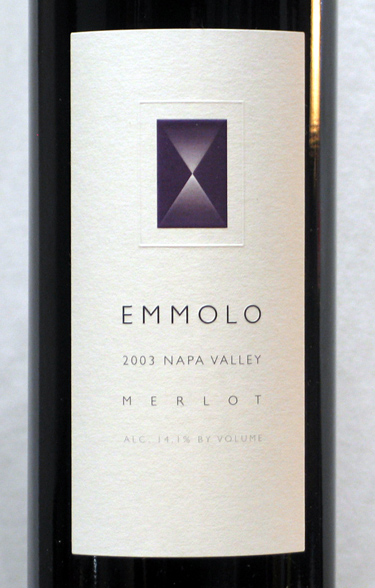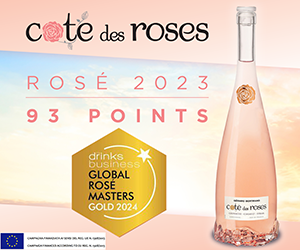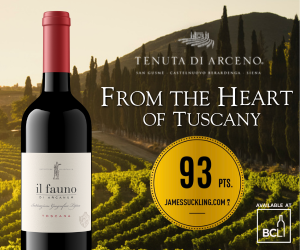It's that time of the year when many of us take stock of our business and plan for the future.

Trends are ascertained; actions taken. When it comes to wine, trending is probably a better word since few things relating to grapes happen overnight.
Take the screwcap or should I say, twist it. Once shunned by all, it's now mandatory if you want to sell your wine to U.K. supermarkets and equally demanded by cutting edge restaurant wine buyers worldwide. Australia and New Zealand are practically cork-free zones and there are signs North American producers will finally embrace the taint-free bottle closure in 2007. It's a no-brainer for B.C whites.
As suggested last year, inroads made by the screwcap are breaking down other wine packaging barriers. Boxed or cask wine is back in the limelight with better technology and design initially catching the eye of those consumers looking for something different. Think of those iPod-clutching, BlackBerry-toting consumers and you can easily imagine a market for slickly packaged high-quality, tetra boxed, or bagged wine. But if it isn't high quality juice, don't bother. No one wants the cheap stuff -- in bottles or bags.
Environmentally friendly is another concept penetrating the lexicon of wine. Glass versus tetra packs and/or Mylar bags means less weight to ship and less fuel spent to get it to market. Recycling is now a major issue with consumers and those wine companies who come up with a better idea will no doubt profit in the future.
Sustainable, organic, and its mystic version, bio-dynamic (farming and winemaking) are now comfortably ensconced in the landscape and the wines emanating from such techniques are turning heads. Some believe it is the only force in the business capable of halting or at least slowing down the runaway effects of globalization and bland wine.
The new-red-is-white theory still holds water, but the red wine ship is so big there may need to be an intermediate step before the switch is full on. Answer -- welcome to the rose revolution.
What was a dribble in 2005, and a drop in 2006 will be a flood in 2007. Look for Spain and France to lead the way with copycat labels from the rest of the globe. This year all, but the most commercial producers, will make their roses dry, or at least drier, further fuelling interest and bringing food into the equation.
The march toward specificity continues as consumers demand that the wine they drink come from somewhere other than a 1.2 million litre tank. Specifically I mean a region, sub-region or appellation. That means Willamette Valley, Oregon pinot noir; Western Australia, cabernet sauvignon, Mendoza, Argentina malbec, Walla Walla, Washington merlot, Sancerre, France sauvignon blanc, Apulia, Italy nero d'Avola, and Okanagan Valley, B.C. pinot gris are more likely to be on the wine list than off.
One less than favourable trend could be what I term "muddled" wine. It results from New World producers trying to reduce alcohol and balance acidity to look more like Old World wines. Conversely, in the Old World it occurs when producers, unfamiliar attendant riper fruit and lower acidity due to global warming, miss the fresh, balanced mark. It should make blind tasting in 2007 hell.
Today we feature but a sneak preview of what's to come in 2007.
I love the Cono Sur Gewurztraminer Limited Release 2006 from Bio-Bio way down south in Chile. It's fresh, crisp and fairly dry with ginger, orange, grapefruit, honey, lychee and mineral flavours. Try with Indian food, chicken or pork. The value is incredible.
Apulia is where the Italian bargains are and Tormaresca Paiara 2003 is one of them. Here negroamaro and cabernet sauvignon combine for an $11 deal packed full of tobacco, cherry jam and spicy, cooked cassis flavours. Rustic but perfect with lamb chops or beef ribs.
Devil's Rock Pfalz Riesling 2004 is a bright white made from riesling, bottled under screwcap and selling for $11.21. If it was from B.C., the slightly sweet wine with the peach, honey, floral and petrol flavours would be twice the price and sold out. Serve with spicy dishes.
An early season rose pick is the Chateau Guiot Rose 2005 from Costieres de Nimes in the Southern Rhone Valley. A blend of grenache, syrah and cinsault, it has fine, juicy, black-fruit flavours with a mineral streak. Drink this with a grilled chicken Caesar salad.
I love to drink merlot when it tastes like Emmolo Merlot 2003 from Napa Valley, California. Smoky, cherry, plum flavours flecked with orange, coffee and vanilla make this delicious red hard to beat for the price.
We close with a superstar white. Christian Moreau Chablis Grand Cru Les Clos 2004 is the perfect ambassador for a wine from an appellation. This chablis is round, fresh and delicate, but full of juicy, green apple, pear and flinty lemon flavours. It is the perfect oyster wine.
Looking Ahead to 2007
CONO SUR GEWURZTRAMINER LIMITED RELEASE 2006, BIO-BIO VALLEY, CHILE
Price: $10.88
UPC: 7804320753904
Score: 89/100
Remarks: Serve with Indian food, chicken or pork. Incredible value.
TORMARESCA PAIARA 2003, APULIA, ITALY
Price: $10.99
UPC: 8026530000336
Score: 87/100
Remarks: Warm, round, fat, supple style with some light, tannins.
DEVIL'S ROCK PFALZ RIESLING 2004, PFALZ, GERMANY
Price: $11.21
UPC: 4002301436720
Score: 85/100
Remarks: Simple, fresh luncheon-style Riesling.
CHATEAU GUIOT ROSE 2005, SOUTHERN RHONE VALLEY, FRANCE
Price: $14.99
UPC: 087396006779
Score: 86/100
Remarks: This is a stylish rose at a great price.
EMMOLO MERLOT 2003, RUTHERFORD, NAPA VALLEY, CALIFORNIA, UNITED STATES
Price: $34.99
UPC: 00831526000348
Score: 90/100
Remarks: Tasty Napa merlot at an affordable price.
DOMAINE CHRISTIAN MOREAU CHABLIS GRAND CRU LES CLOS 2004, CHABLIS, BURGUNDY, FRANCE
Price: $59.99
UPC: 089744423672
Score: 92/100
Remarks: Fresh and delicate, but with intense flavours. The ultimate oyster wine.

 quicksearch
quicksearch





